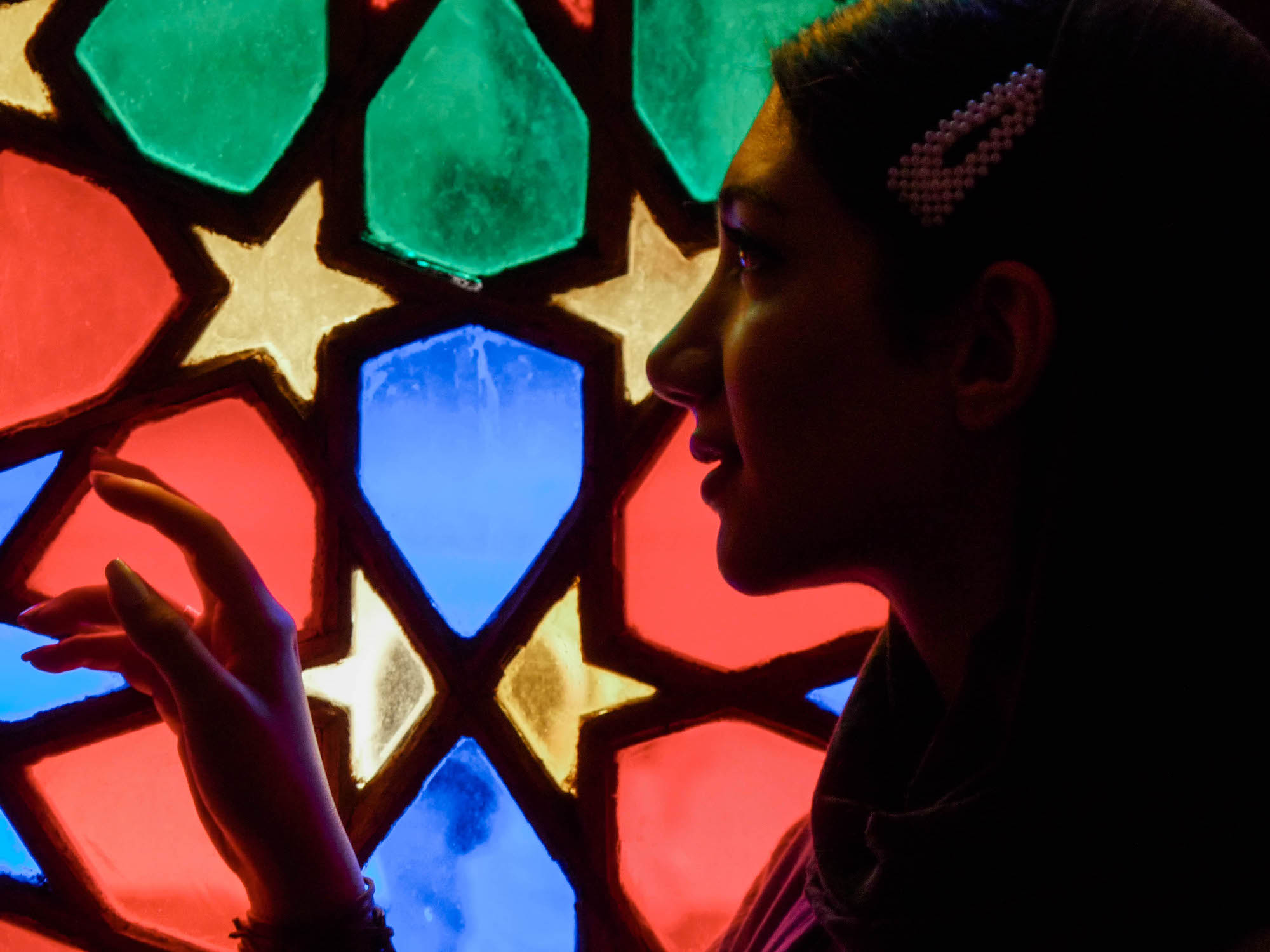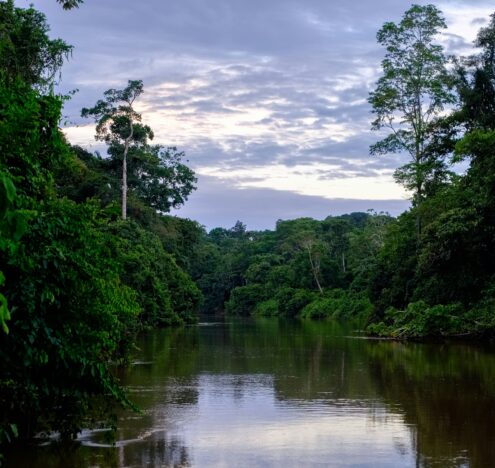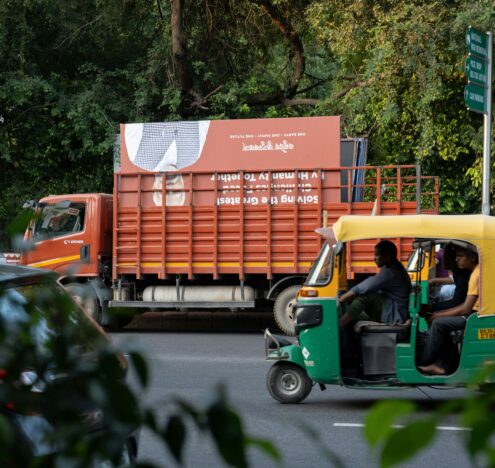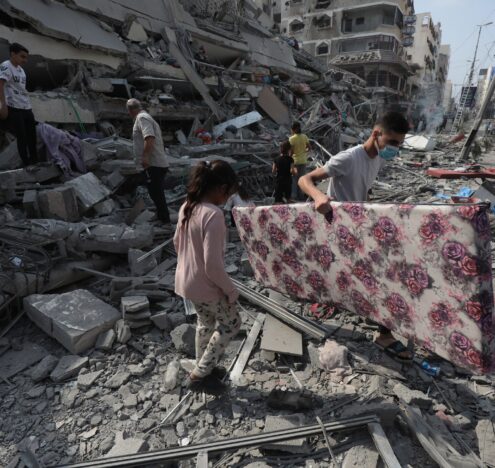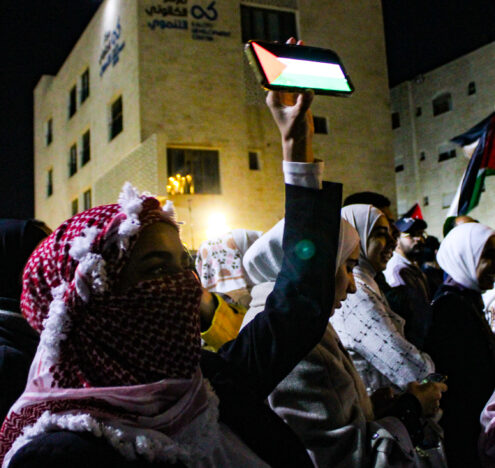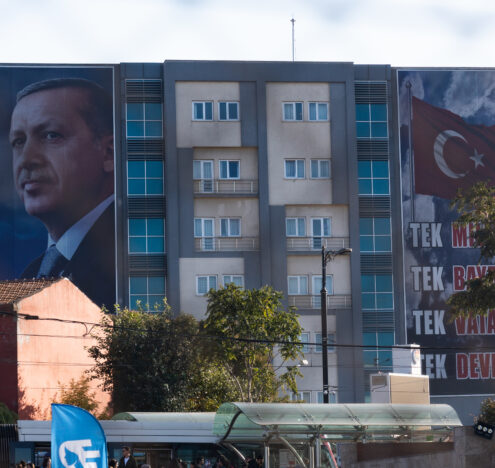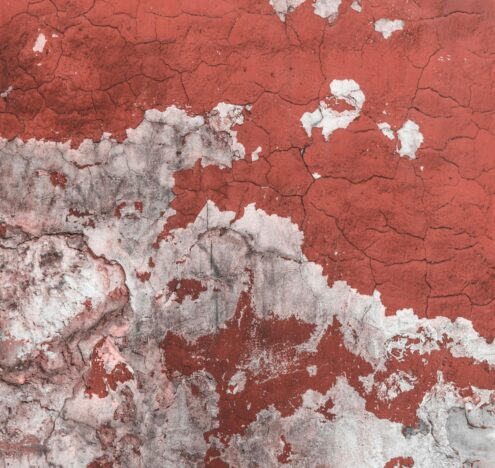On Nov. 15, protests erupted in Iran. A 50% hike in gas prices became the straw as Iran’s back broke under the weight of economic pressure, in part due to US sanctions. A severe crackdown followed in what appears to be the worst violence since the Iranian regime quashed the Green Revolution in 2009. Today, hospitals are overflowing, even as internet access is restored. And the view from America remains one of isolation, with only a rare glimpse inside.
On October 18, just weeks before the protests, 12 Americans from Kentucky, Illinois, New York, Washington DC, Florida, California, Michigan, and Hawaii flew to Tehran on a peace delegation, their visas approved just a month before. In an email exchange this week, I asked journalist Jon Letman, who was one of those Americans, about the calm, quiet, normalcy, pressure, and pain the Iranians he spoke with are feeling today.
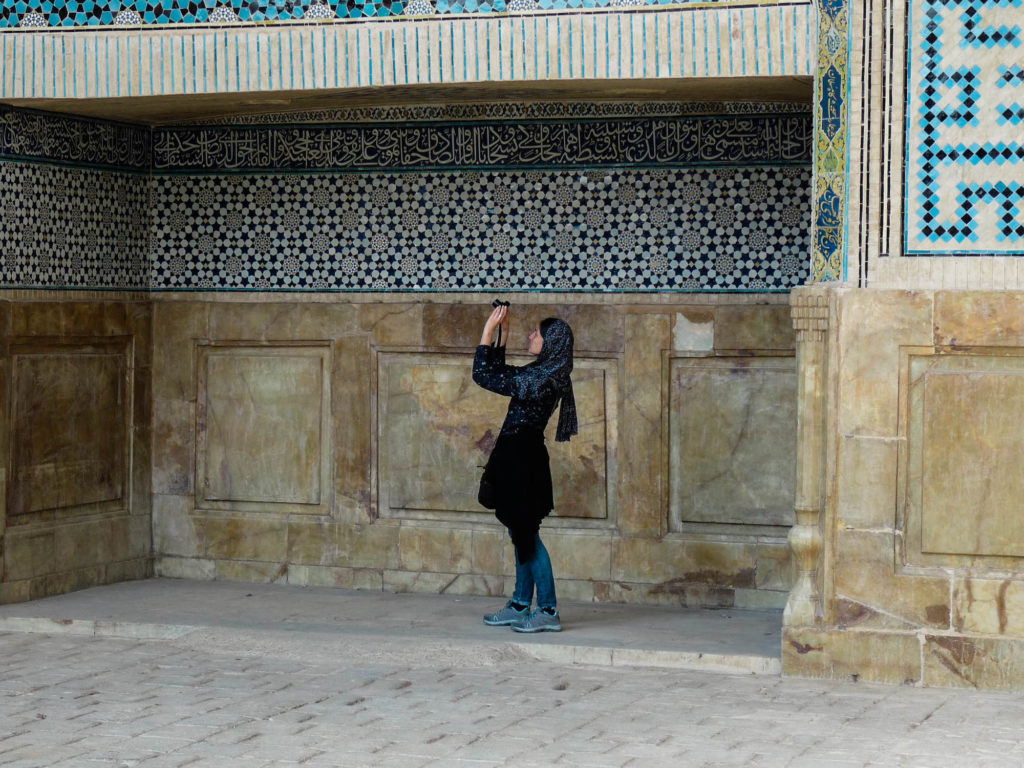
A woman takes a photo inside Isfahan’s Masjed-e Jame, one of Iran’s most historically important mosques. / Jon Letman
Q: Why did you go to Iran?
Jon: I’ve wanted to go to Iran for many years. Persian history and culture alone are a huge draw, but I also think it’s important to, whenever possible, visit countries with whom our own government is at odds. For 40 years Iran has been characterized in the US as the ultimate bad guy — part of the “axis of evil,” and so on. There’s such a lack of understanding of Iran in the US and what little we know about Iran is so narrowly defined. For me, over the years, the more Iranian people I’ve met, the more I’ve read, and the more I’ve learned, the stronger I’ve felt about visiting and seeing the place for myself.
Q: Did you have any concerns at the outset about traveling to Iran, particularly as a journalist?
Jon: Once I saw the opportunity to go existed, I never hesitated but to be sure there are plenty of reasons one might be concerned. Human rights violations, arbitrary arrests, and charges of espionage and worse against people who have done nothing wrong are not uncommon stories in Iran. That said, I felt it would be ok despite the many people who expressed their concern and told me not to go. I talked to several people who know Iran very well or who are from Iran and got a good sense of what was advisable to do and not do. Also, I did not go to Iran with the intention of reporting from inside Iran. I was part of a peace delegation organized by CODEPINK. I was going there as a US citizen with the intention to listen and learn, but I have since written about the impact of sanctions soon after coming home. It’s worth mentioning that as a US citizen, you are not allowed to freely roam around Iran. We had to be on a guided tour and were accompanied by four guides (for 12 people) at all times. While I didn’t have the freedom to move around as I normally would, I did feel completely safe while there.
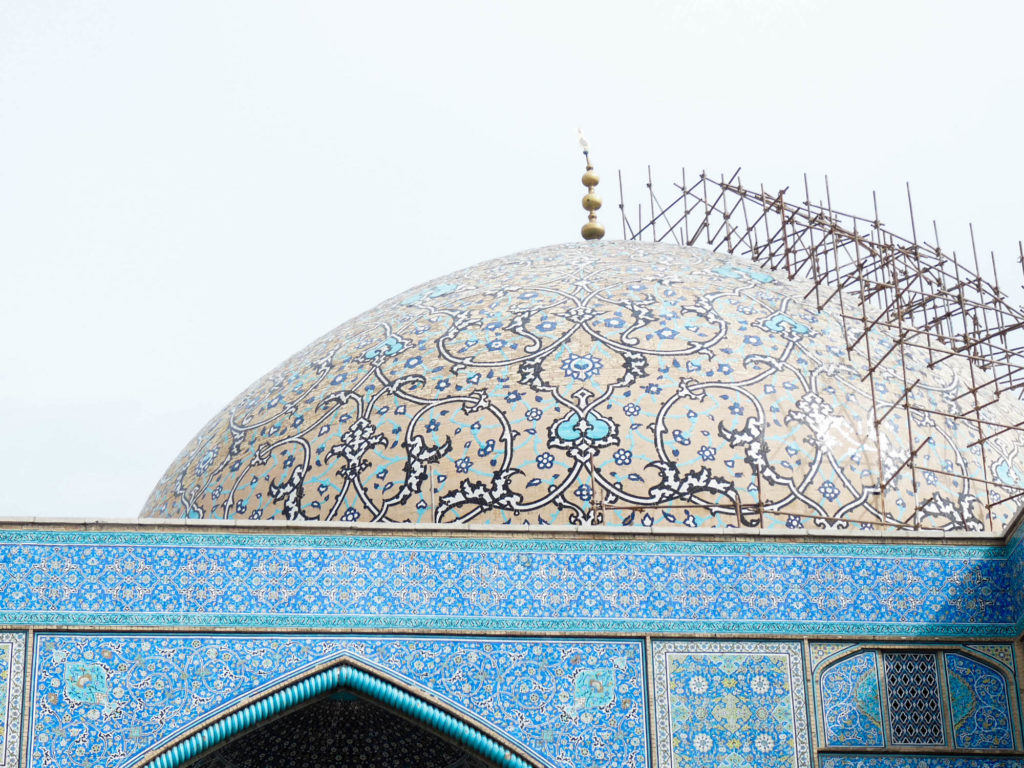
The dome of the 17th century Sheikh Lotfallah mosque in Isfahan is a masterpiece of Persian architecture. / Jon Letman
Q: What did you find most surprising about the country?
Jon: I have read a lot about Iran over the years and so I wasn’t particularly surprised. Much of what I saw and experienced was as others had described it — the cities we visited (Tehran, Isfahan, and Shiraz) were very clean, modern, and thoughtfully laid out. As I’d heard, people were incredibly friendly and welcoming (despite the suffering Iranians experience under US sanctions and policies), and also very sophisticated and highly educated. What I didn’t fully appreciate before going, and what really struck me, was the degree to which Iran is self-reliant. Owing to decades of sanctions and enmity with the US and some western nations, Iran has been forced to stand on its own two feet without the foreign presence or outside influences you find in most other countries. I was struck by how few signs of foreign companies, brands, and corporations could be found. Iran’s domestically produced goods seemed everywhere, from the Iranian tires on Iranian-manufactured cars to trendy Iranian coffee shops and fast food to the tiny Iranian toothpaste in the hotel and the toilet in the bathroom — Made in Iran. It was kind of refreshing to visit a place that appeared to be truly itself rather than totally overrun by the global transnational brands that make so many other places look and feel like everywhere else.
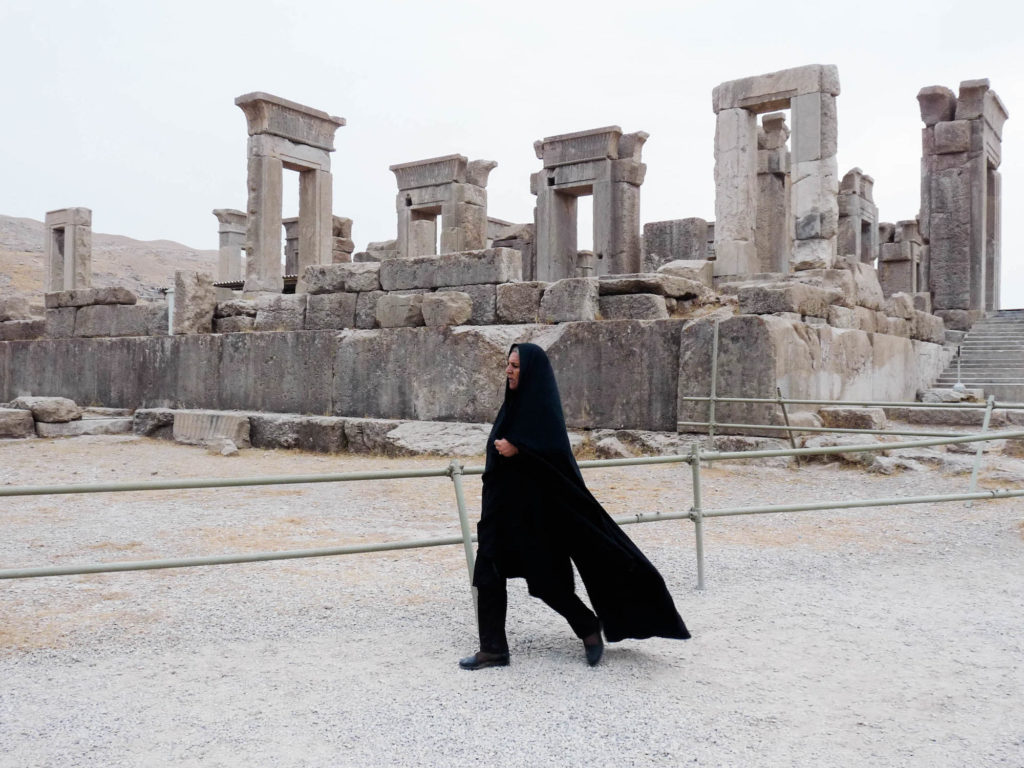
Walking through the ruins of Takht-e Jamshid (known outside of Iran as Persepolis), which was built by Darius the Great, in part, to celebrate Nowruz, the Persian new year. / Jon Letman
Q: Best thing you ate or experienced?
Jon: One dish that I quickly came to love was something called fesenjan or fesenjoon, a tangy, flavorful stew made from ground walnuts and pomegranate molasses with chicken. I had it two or three times and see why Iranian’s mouths water when they hear the name.
The best thing I experienced? The sincere warmth of the Iranian people, the jaw-dropping beauty of Persian architecture, and the chance to visit Isfahan were all remarkable. Perhaps the most meaningful encounter I had was with veterans of the Iran-Iraq war when we went to the Tehran Peace Museum. These men had been gravely injured in the Iran-Iraq war (1980-88) and they delivered powerful testaments to the longstanding suffering the comes from war. Two men had respiratory and vision problems from chemical weapons used by Saddam Hussein (with support from the USA) and one was a double-amputee. The spoke eloquently about the futility of war and how they continue to suffer under US sanctions today.
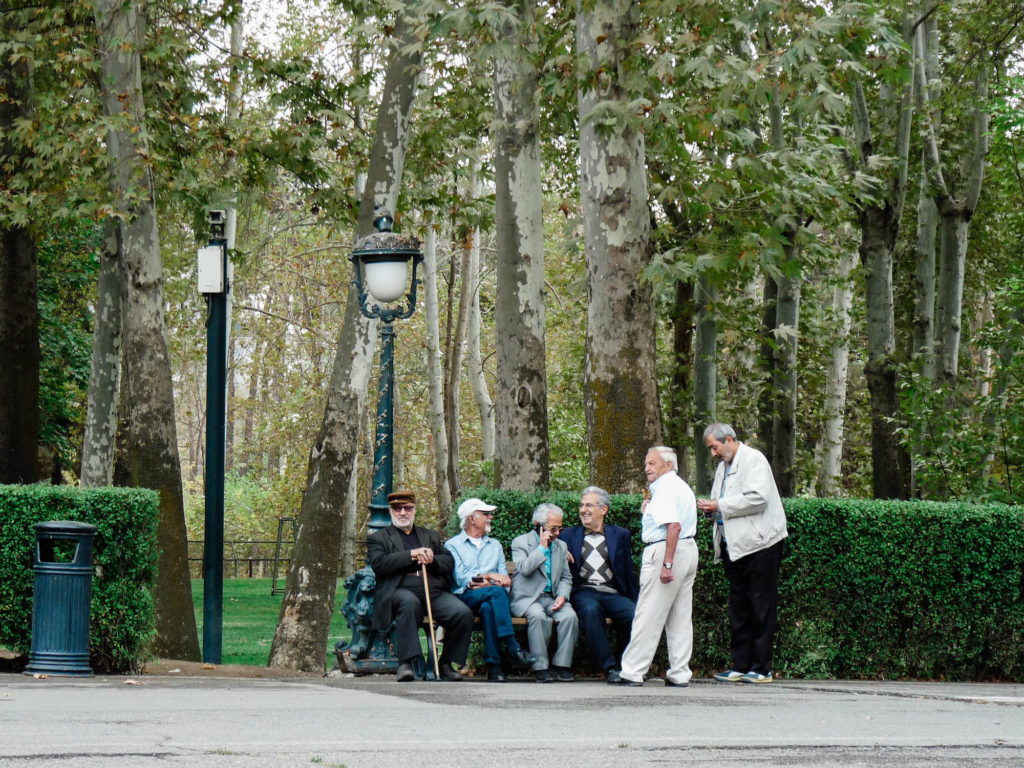
Tehrani elders gather on the grounds of the Sa’dabad Palace Complex on an autumn morning to share stories and songs. / Jon Letman
Q: What was your sense of the economic pain people are feeling? How does it compare to previous periods under sanctions?
Jon: This was my first visit to Iran so I can’t compare now to previous periods but it was pretty clear people were under a lot of economic and political pressure. Whenever asked about sanctions, people were quick to say how they were hurt by US sanctions and being isolated from the global systems of commerce and finance. The people I spoke to were universally opposed to US policies and many were also quick to criticize their own government. I wasn’t there long enough nor was I able to move about freely enough to get a sense of the daily economic problems Iranians face, but they did speak openly about their own suffering.
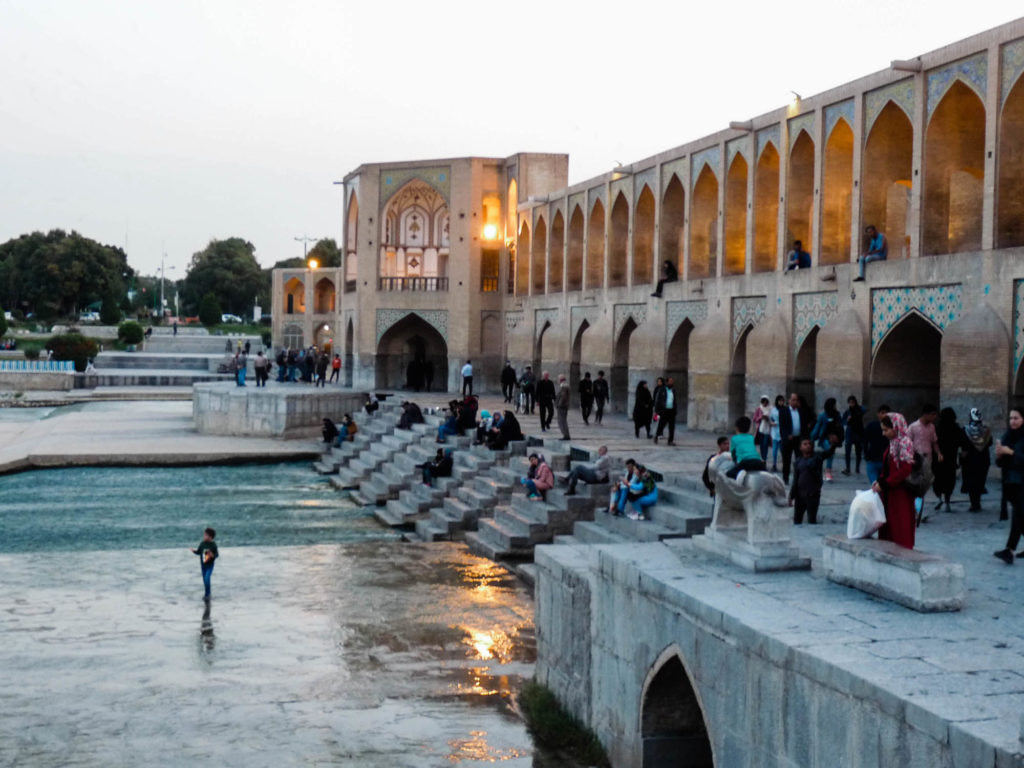
The Khaju Bridge, spanning the Zayandeh River in Isfahan, is a popular meeting place at sunset. / Jon Letman
Q: How do people feel about the US? The EU?
Jon: As I mentioned, the people I spoke with made it clear that while they are strongly opposed to US foreign policy and the Trump administration’s increased sanctions and ‘maximum pressure’ campaign, that did not diminish the genuine warmth and kindness people displayed towards our American group. People were generally very surprised to see Americans (some Iranians told me that hadn’t seen American visitors in several years) and almost to a person, they went out of their way to say welcome and “thank you for visiting Iran.” I didn’t get a sense of how Iranians feel about the EU, but one Iranian told me (I am paraphrasing), “When we meet Americans, we get along with them very well and feel no difference between us. With Europeans we can feel a difference, but not with Americans.”
Q: Did you learn anything surprising from the folks you spoke to?
Jon: I did get an appreciation for how people in Iran seem to view the present in the context of the past. Everywhere we went there were large murals of soldiers who had been martyred in the Iran-Iraq war. I heard references to that conflict and the ongoing suffering from it, and to earlier events in Iran-US relations going back to the 1950s and earlier and how events in the past, in some cases, were very relevant to things happening today. I had the sense that people in Iran not only study history but view current events in context of those earlier events. To me this was in marked contrast to many Americans who seem to have forgotten (or never learned) a lot of our own history, especially as it relates to other countries and the conflicts we helped create or made worse.
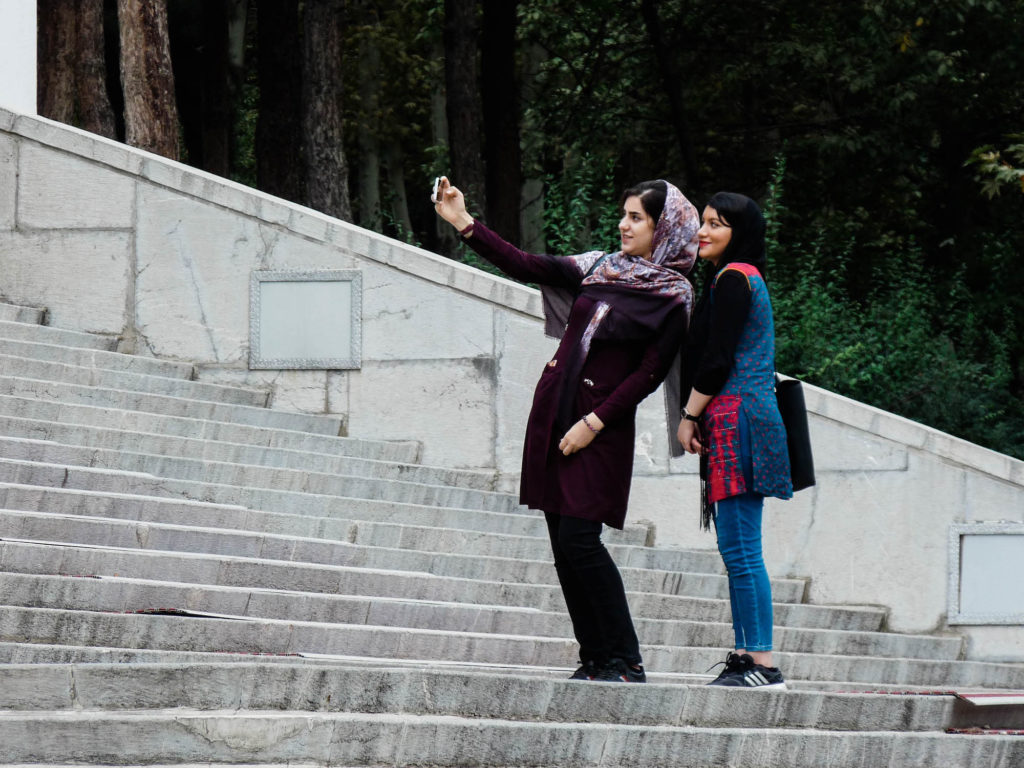
Two young Iranian women take a selfie on the steps of the Sa’dabad Palace in north Tehran. / Jon Letman
Q: Protests in Iran have turned violent, did you get the sense that people were angry? Where was that anger directed?
Jon: In the short time I was in Iran (one week), I didn’t get a sense of anger but clearly there was frustration, and sometimes a sense of resignation or sadness at how life seemed to be growing ever more difficult. People were quick to smile, but I could sense unease or discontent below the surface. Also, we were told that a day or two after we were to fly out of Iran (October 27), there were going to be government closures of certain sites like Persepolis and elsewhere for fear that an unofficial holiday celebrating Cyrus the Great might spark protests or civil unrest. We were the last foreigners to gain admission to these sites before they were to be temporarily closed. As it turns out, major protests erupted across Iran a little more than two weeks after we left. As many have pointed out, the anger in Iran today appears aimed at its own government, but there’s no love lost for the US government either.
Q: The Trump administration believes that the pressure it’s putting on Iran will cause the Iranian people to question their own leaders’ decisions. Do you get the sense that their strategy is working?
Jon: I don’t see anything the Trump administration is doing with regards to Iran as something I would describe as “working.” Iranians have questioned their own leaders’ decisions for a long time. Isn’t that true almost everywhere in the world? I would not say that Trump’s increased sanctions, “maximum pressure” campaign, or threats to obliterate Iran are going to drive Iranian citizens or Iran’s government to do anything that is likely to improve conditions domestically for Iran or internationally for Iran regionally or internationally. Trying to drive a wedge between Iranian people and their government has proven to be a very ineffective way to bring about positive change in Iran.
In October, the Center for International and Security Studies at Maryland published an exhaustive study entitled Iranian Public Opinion Under ‘Maximum Pressure’ which examines Iranian views on a number of different subjects. That report and others, as well as what I heard from people while in Iran, reinforce that Trump’s policies toward Iran have only made a very bad situation that much worse. It’s a real shame because the people of Iran deserve so much better.














